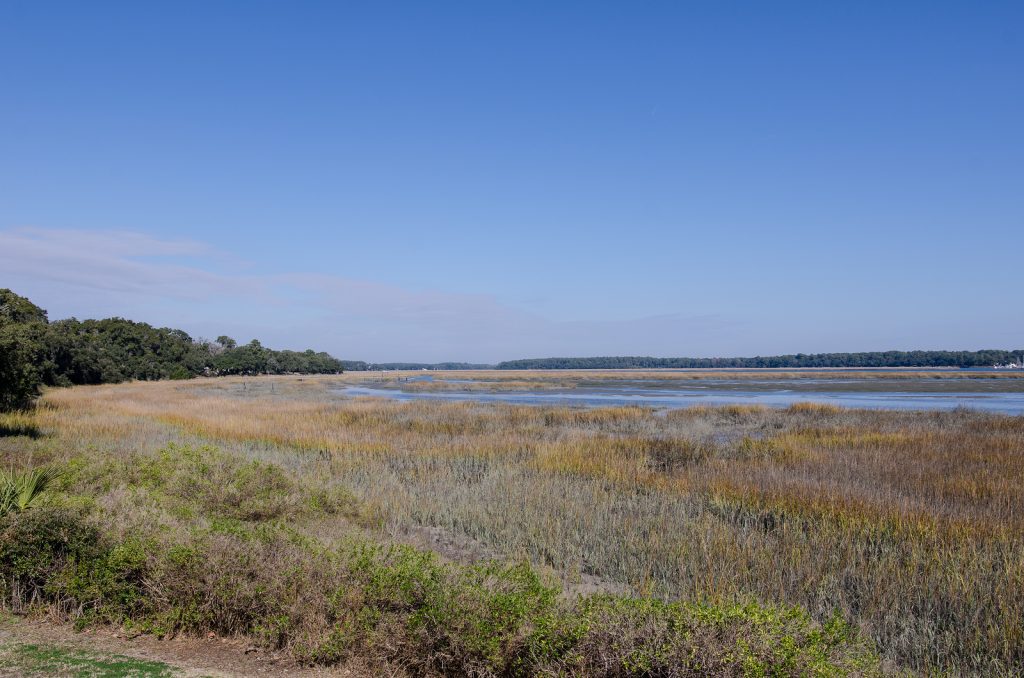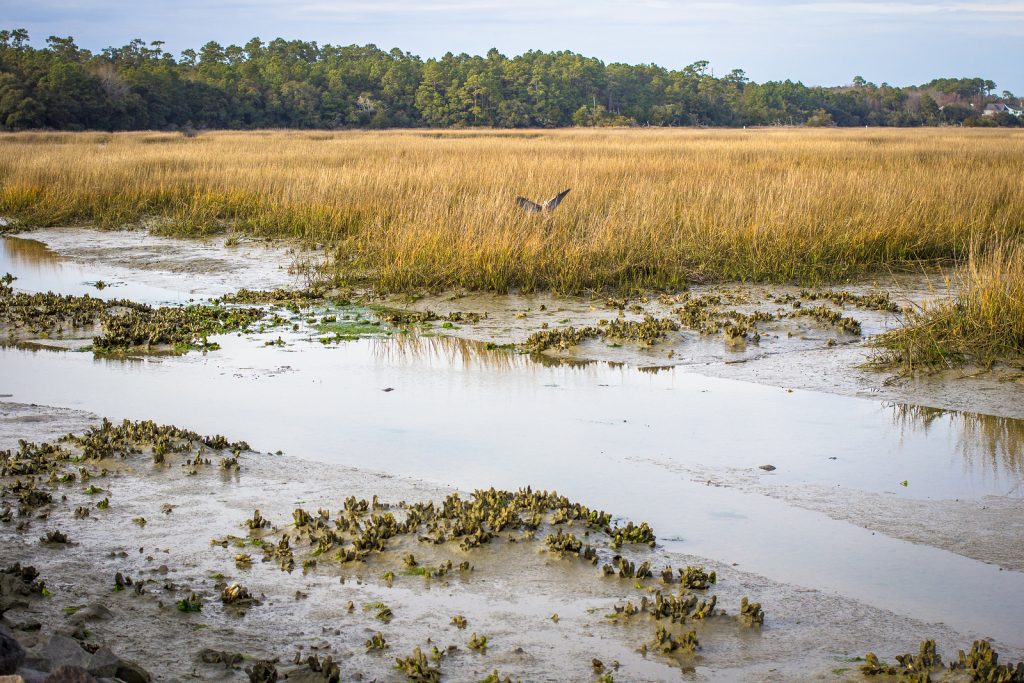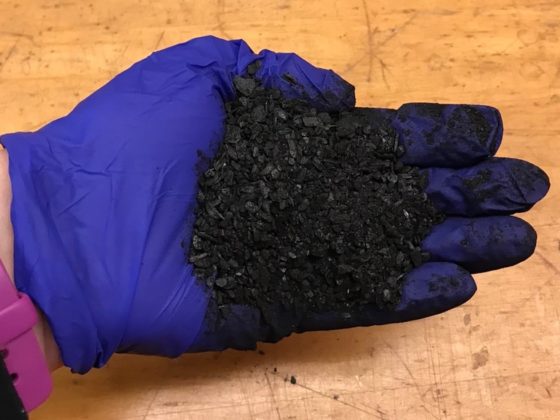April 15th is circled in red on calendars for tax day—and for the close of the public comment period on the Environmental Protection Agency’s controversial proposal to rescind safeguards for many waters and wetlands that have long been covered by the Clean Water Act.
The Trump Administration’s new rule would remove federal protections for wetlands lacking a continuous, surface water flow directly into navigable waters—a decision that ignores important hydrological connections through groundwater and other means. According to an analysis by the Southern Environmental Law Center, this proposed rulemaking would repeal federal safeguards for 80 to 90% of our wetlands across the country.[1] (EPA’s own numbers put the rollback at a still unacceptably high 51% loss of coverage.)[2]
The rule would also initiate the wholesale removal of protections for ephemeral streams, disregarding EPA’s own evidence on the role of arroyos in the arid and semi-arid American Southwest. In Nevada, for example, tributaries that remain dry for several months out of the year account for 85% of the streams in the state.[3]
The EPA proposal would impact frogs and salamanders in “isolated” Carolinas bays, and threaten the survival of Rio Grande cutthroat trout dependent on New Mexico streams that “can be bone dry in summer.”[4] The harm could extend out to endangered killer whales (orcas) off the coast of the Pacific Northwest, who feed on chinook salmon that spawn in small streams and spend their early days in floodplain wetlands.[5]

Enacted more than forty-five years ago, the Clean Water Act established a congressional goal “to restore and maintain the chemical, physical, and biological integrity of the Nation’s waters.” To meet this target, Congress prohibited unpermitted discharges into so-called “navigable waters,” which the law defined as “the waters of the United States, including the territorial seas.”
The President, acting through the EPA and the U.S. Army Corps of Engineers, was left with the task of defining the “waters of the United States” that merit protection under the law. This remains an immense responsibility. As the Supreme Court of the United States observed more than thirty years ago:
“In determining the limits of its power to regulate discharges under the Act, the Corps must necessarily choose some point at which water ends and land begins. Our common experience tells us that this is often no easy task: the transition from water to solid ground is not necessarily or even typically an abrupt one. Rather, between open waters and dry land may lie shallows, marshes, mudflats, swamps, bogs—in short, a huge array of areas that are not wholly aquatic but nevertheless fall far short of being dry land. Where on this continuum to find the limit of ‘waters’ is far from obvious.”[6]
For decades, federal agencies attempted to draw the line through case-by-case analyses. Industries bristled at what they claimed were inconsistently applied jurisdictional limits. In one case, the Army Corps of Engineers sought to regulate an “abandoned sand and gravel pit” under the Clean Water Act because the pit was used as habitat by migratory bird species protected under an international treaty.[7] The Supreme Court struck down the so-called “Migratory Bird Rule,” explaining that “[i]t was the significant nexus between the wetlands and ‘navigable waters’ that informed our reading” of the Clean Water Act.[8]
A hydrological connection—a significant nexus—is therefore what drives the discussion of which wetlands, tributaries, and arroyos are protected by the Clean Water Act.[9] Establishing that scientific basis for how pollution makes its way into America’s rivers underscores Congress’s ultimate goal of restoring our waterways as safe for fishing and swimming.

And that is precisely where the Trump Administration’s rollback falls woefully short. It is critical to remember what America looked like in the early 1970s, shortly before Congress passed the Clean Water Act with bipartisan majorities in both the House and the Senate. In 1970, the New York Times reported, “The heat of summer is enveloping the nation’s capital, and with it has come the annual resurgence of a problem residents have come increasingly to dread: A stomach-turning miasma rising from the Potomac River.”[10] The Times went on to cite a federal government report that documented how “sludge deposits have blanketed fish spawning grounds,” leading to “sludge deposits … releas[ing] obnoxious odors when uncovered by ebb tide.”[11]
When Congressional leaders passed the Clean Water Act in 1972 to remedy problems like the polluted Potomac, they knew we could not merely address discharges directly into our “navigable waters” like major rivers. Rather, they had to look at indirect sources of pollution upstream as well, aware that these sources would aggregate contaminants.
Today, peer-reviewed journals are “filled with studies … of the ecological connections between small tributaries and larger waters downstream.”[12] The Trump administration’s proposal would repeal Clean Water Act protections for many of these smaller water bodies—the “ephemeral” streams and so-called “isolated” wetlands. Doing so is not de-regulation in the sense of cutting bureaucratic red tape; it is putting water quality at risk for all of us who live downstream.
The basic, scientific facts on how pollution moves through water highlight the significance of the rollback that EPA now proposes. Blan Holman, a Clean Water Act expert with the Southern Environmental Law Center explained, “This isn’t some tweak around the edges. This is really redefining what the Clean Water Act does.”[13]
The rule is expected to be finalized by mid-summer. Litigation to defend the original purposes of the Clean Water Act is almost sure to follow.
Cale Jaffe is Assistant Professor (General Faculty) of Law at the University of Virginia, where he is the Director of the Environmental & Regulatory Law Clinic
[1] Press Release, “New Video Outlines What’s at Stake in Federal Proposal to Gut Clean Water Act,” Southern Environmental Law Center (Feb. 14, 2019), at https://www.southernenvironment.org/news-and-press/press-releases/new-video-outlines-whats-at-stake-in-federal-proposal-to-gut-clean-water-ac.
[2] Ariel Wittenberg, “Still more wetlands, streams could lose protection,” E&E News (Dec. 13, 2018), at https://www.eenews.net/stories/1060109579.
[3] Ariel Wittenberg & Jeremy P. Jacobs, “Trump’s Rule a Wild Card for Western Water Supplies,” E&E News (Dec. 26, 2018), at https://www.eenews.net/stories/1060110469.
[4] Ariel Wittenberg, “Salamanders to Whales: How Trump Rule Might Affect Wildlife,” E&E News (Dec. 19, 2018), at https://www.eenews.net/stories/1060110125.
[5] Id.
[6] United States v. Riverside Bayview Homes, 474 U.S. 121, 132 (1985).
[7] Solid Waste Agency of Northern Cook County v. U.S. Army Corps of Engineers, 531 U.S. 159, 164 (2001).
[8] Id. at 167.
[9] Rapanos v. United States, 547 U.S. 715, 759 (2006) (Kennedy, J., concurring).
[10] Gladwin Hill, “The Polluted Potomac: Sewage and Politics Create Acute Capital Problem,” New York Times (July 12, 1970), at https://www.nytimes.com/1970/07/12/archives/the-polluted-potomac-sewage-and-politics-create-acute-capital.html.
[11] Id.
[12] Dave Owen, “Little Streams and Legal Transformations,” 2017 Utah L. Rev. 1, 7 (2017).
[13] Press Release, “New Video Outlines What’s at Stake in Federal Proposal to Gut Clean Water Act,” Southern Environmental Law Center (Feb. 14, 2019), at https://www.southernenvironment.org/news-and-press/press-releases/new-video-outlines-whats-at-stake-in-federal-proposal-to-gut-clean-water-ac.





